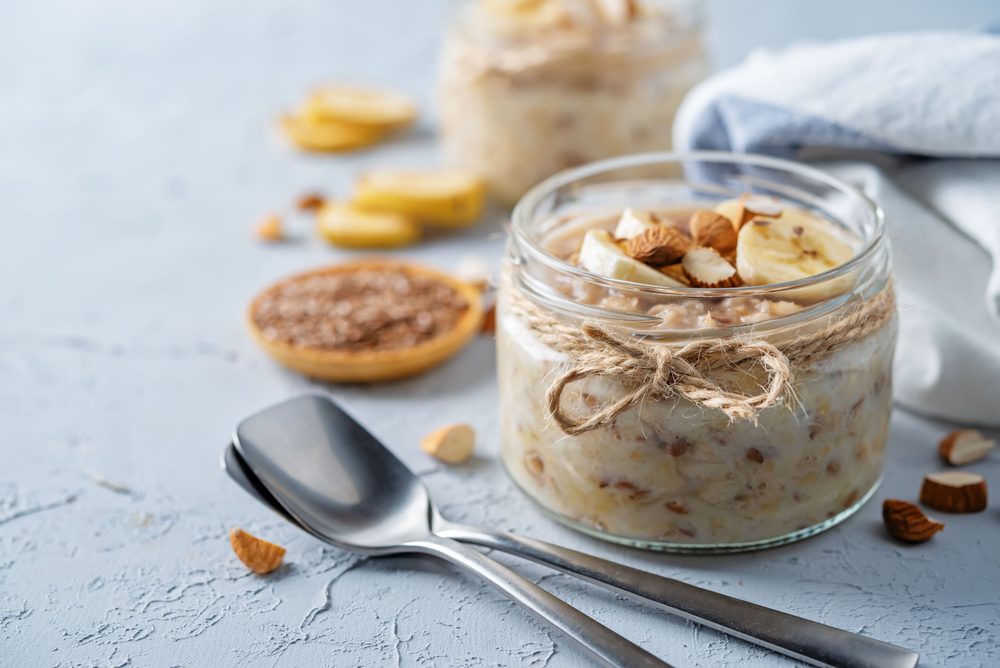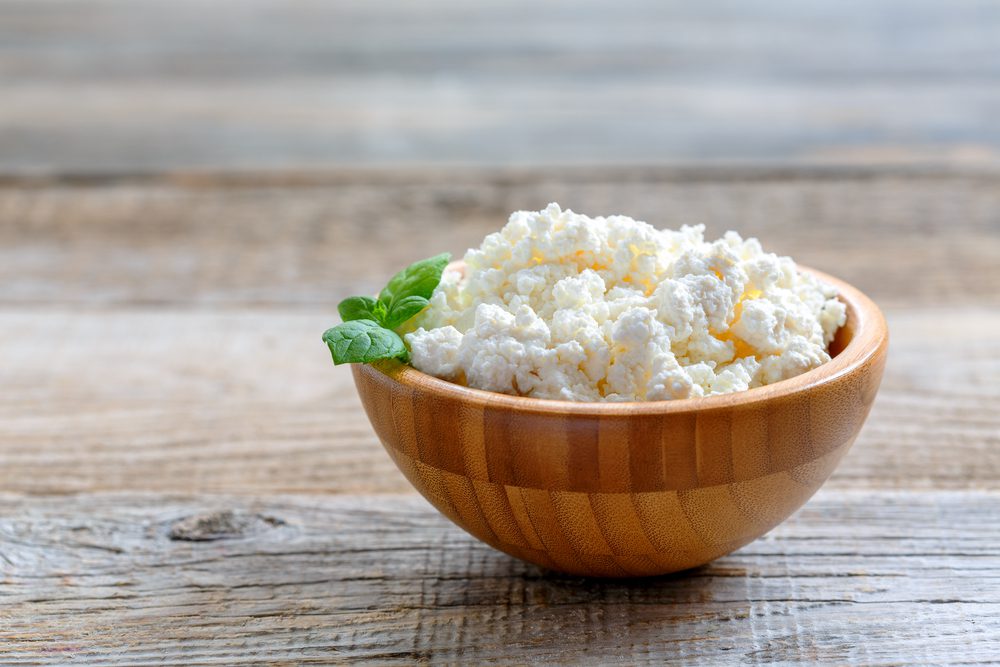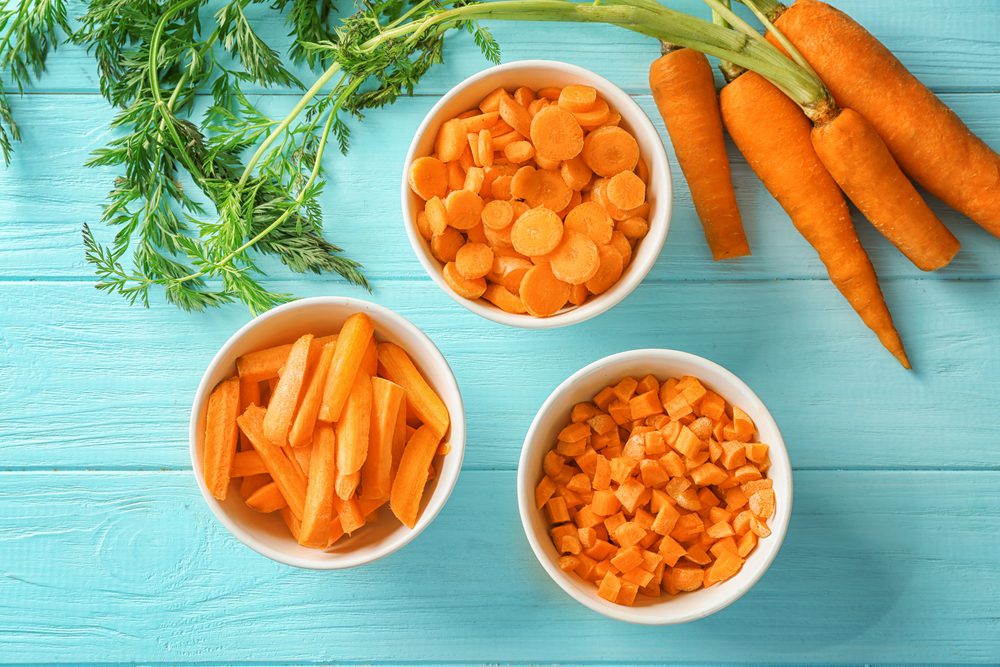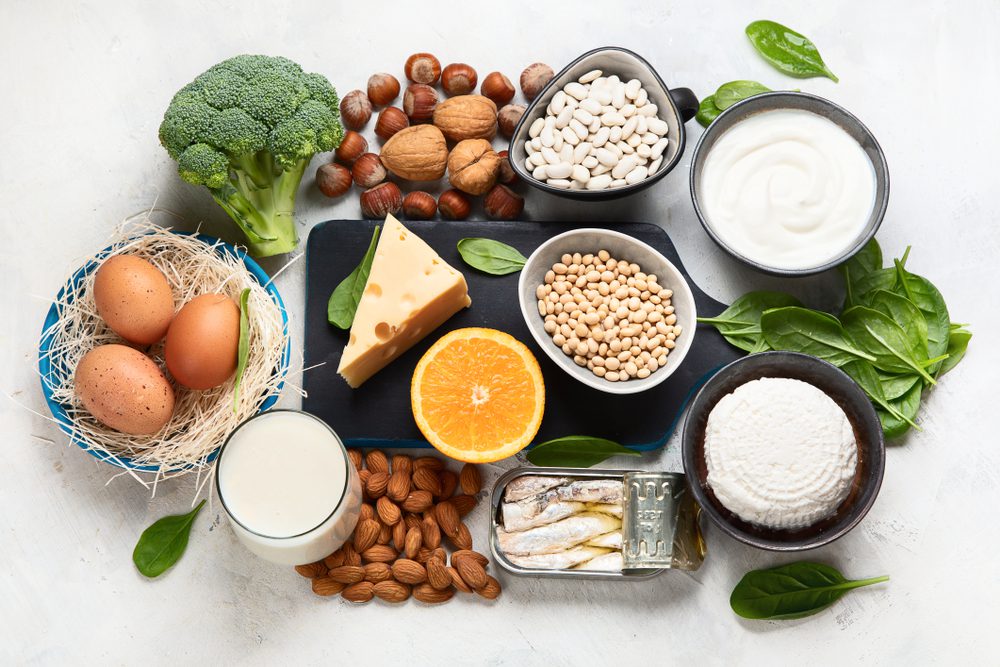Cutting calories is one of the most difficult components of weight reduction. Many low-calorie foods leave you feeling hungry and unsatisfied in between meals, making it much simpler to overeat and overindulge.
Fortunately, many healthy foods are both satisfying and low in calories. Here are 17 low-calorie dishes that are rather filling.
17 Tasty Foods You Can Eat Lots of Without Gaining Fat

1. Oats
Oatmeal is a great supplement to any balanced diet. They aren’t just low in calories, but also high in protein and fiber, which keeps you satisfied. A 1/2 cup portion of dried oats contains only 148 calories and contains 5.5g of protein and 3.8g of fiber, both of which can influence your hunger and appetite.
In one research of 48 people, consuming oatmeal boosted feelings of fullness while decreasing appetite and calorie consumption at the following meal. Another small research found that when compared to a ready-to-eat breakfast cereal, instant and old-fashioned oatmeal significantly improved hunger control over four hours.
If you feel like tyring different new brands of oats, Amazon has plenty of options!
2. Greek Yogurt
Greek yogurt is a high-protein food that can help control cravings and assist in weight reduction. Though the exact figures vary depending on the type and taste, a 2/3-cup (150-gram) serving of Greek yogurt delivers around 130 calories and 11 grams of protein.
One research of 20 women looked at how a high-protein yogurt snack compares to unhealthy high-fat snacks like chocolate or crackers on hunger. Women who ate yogurt not only felt less hungry but also ate 100 fewer calories at supper than those who ate crackers or chocolate.
In another study, high-protein Greek yogurt helped reduce hunger and boosted feelings of fullness when compared to lower-protein snacks in 15 women.
3. Soup
Soup is sometimes considered as just a light and easy side dish, although it can be rather filling. Even if the components are the same, some studies show that soups are more filling than solid dishes.
Smooth soup, for example, reduced stomach emptying and was more successful at creating fullness than a solid meal or chunky soup, according to a 12-person research. Another research of 60 adults found that eating soup before a meal reduced total calorie intake at lunch by 20%.
Keep in mind that, while creamy soups and chowders are satisfying, they can also be heavy in calories. To cut calories and increase satiety, use a lighter broth or stock-based soup.
4. Berries
Berries, such as blueberries, blackberries, strawberries, and raspberries are high in minerals, vitamins, and antioxidants, which can help you live a healthier life. Their high fiber content promotes weight reduction and decreases appetite. Blueberries, for example, provide 85 calories but 3.6 grams of fiber per cup (150 grams).
Berries are especially high in pectin, a kind of dietary fiber that has been demonstrated in human and animal studies to decrease stomach emptying and boost feelings of fullness. This can also assist in reducing calorie consumption, which may aid in weight reduction.
According to one study, a 65-calorie berry snack in the afternoon reduced calorie consumption later in the day compared to a 65-calorie confectionary snack.
5. Eggs
Eggs are particularly nutrient-dense since they are low in calories but high in a variety of essential elements. A single big egg has 72 calories, 6 grams of protein, and a variety of essential vitamins and minerals. According to research, eating eggs first thing in the morning can help reduce appetite and increase fullness.
In a study of 30 women, those who ate eggs for breakfast instead of a bagel felt fuller and ate 105 fewer calories later in the day. Other research has shown that having a high-protein breakfast can reduce snacking, decrease stomach emptying, and lower levels of the hunger hormone ghrelin.
6. Popcorn
Popcorn is a very satisfying low-calorie food because of its high fiber content. Although 1 cup (8 grams) of air-popped popcorn contains only 31 calories, it contains 1.2 grams of dietary fiber, which accounts for up to 5% of your daily fiber requirements.
Fiber not only slows digestion to increase fullness, but it can help balance blood sugar to minimize hunger and cravings. Furthermore, popcorn, more than many other popular snack foods, can help lower hunger and increase feelings of fullness.
One research of 35 participants found that those who had 100 calories of popcorn felt fuller and more pleased than those who consumed 150 calories of potato chips.
However, keep in mind that these benefits only apply to air-popped popcorn. Many ready-made types have a lot of harmful fats, artificial flavorings, and additional salt or sugar, which boosts the calorie count significantly.
7. Chia Seeds
Chia seeds, recognized as a true superfood, pack a lot of protein and fiber into a little number of calories. A 1-ounce (28-gram) serving of chia seeds has 138 calories, 4.5 grams of protein, and 10.7 grams of fiber. Chia seeds are high in soluble fiber, which absorbs fluids and swells in your stomach to give you a full feeling.
According to some studies, chia seeds can absorb 10–12 times their weight in water and move slowly throughout your digestive tract to keep you feeling full. Including chia seeds in your regular diet will help you control your cravings and lower your appetite.
In one research of 24 individuals, those who ate yogurt containing chia seeds reported less hunger, less desire for sweet meals, and increased feelings of fullness when compared to the control group.
8. Fish
Fish contains a high concentration of protein. A 3-ounce (85-gram) portion of cod, for example, has nearly 15 grams of protein and only 70 calories. According to several studies, increasing protein consumption can lower appetite and ghrelin levels, the hormone that drives hunger.
Furthermore, fish protein may be particularly effective for lowering hunger and appetite. According to one study that compared the effects of beef, chicken, and fish protein on feelings of fullness, fish protein had the largest influence.
To further reduce calorie consumption, choose lean fish such as cod, flounder, halibut, or sole over higher-calorie alternatives such as salmon, sardines, or mackerel.

9. Cottage Cheese
Cottage cheese is a high-protein snack that is ideal for individuals trying to reduce weight. One cup (226 g) of low-fat cottage cheese has around 28 g of protein and just 163 calories. Increasing your protein intake through foods like cottage cheese has been shown in several studies to reduce appetite and hunger.
Some studies also show that consuming protein might impede stomach emptying, hence prolonging feelings of fullness. Furthermore, research on 30 healthy people discovered that cottage cheese and eggs had equal impacts on fullness.
10. Potatoes
Because of its link with high-fat French fries and potato chips, potatoes are sometimes rejected as unhealthy and hazardous. But potatoes, in fact, may be a full and nutritious portion of a balanced diet. One medium baked potato with skin has 161 calories but also offers 4 grams of protein and fiber.
Boiling potatoes were classified as the most satisfying in research measuring the impact of several meals on satiety — or fullness — with a score of 323 on the satiety index – more than seven times that of croissants.
Potato protease inhibitors, which can suppress hunger and decrease food intake to promote fullness, may be involved in the filling effects of potatoes, according to animal and human research.
11. Lean Meat
Lean beef has been shown to effectively lower hunger and appetite in between meals. Lean meats like turkey, chicken, and low-fat cuts of red meat are low in calories but heavy in protein. 4 ounces of cooked chicken breast, for example, has roughly 185 calories and 35 grams of protein.
According to research, eating too little protein may raise hunger and appetite, whilst eating enough protein may lower calorie intake and hunger levels. In one research, those who ate a high-protein supper with meat ate 13% less food by weight at dinner time than those who ate a high-carb, vegetarian meal.
12. Legumes
Due to their high protein and fiber content, lentils, peas, and beans may be particularly filling. Cooked lentils give around 230 calories, 15.6 grams of fiber, and about 18 grams of protein in one cup (198 grams).
Several studies have found that legumes have a major influence on appetite and hunger. A high-protein lunch with beans and peas enhanced feelings of fullness and lowered desire and hunger more than a high-protein supper with veal and pork, according to a study of 43 young men.
Another assessment of nine studies found that eating pulses, a kind of legume, made participants feel 31% fuller than high-carb meals like pasta and bread.
13. Watermelon
Watermelon has a high-water content, which keeps you hydrated and satisfied while providing little calories. A cup of diced watermelon (152 grams) includes 46 calories and a variety of key micronutrients including vitamins A and C.
Low-calorie-density foods, such as watermelon, have been proven to have comparable effects on sensations of fullness and hunger as high-calorie-density meals. Furthermore, meals having a reduced calorie density have been associated with a reduction in body weight and calorie consumption.
Substituting oat cookies with a similar number of calories from fruit lowered calorie consumption and body weight in a study of 49 women.
14. Pineapple
With a crown on his head, the king of fruits. A pineapple represents happiness and freedom. Not for nothing, either. Pineapples’ manganese content is claimed to aid in the metabolization of protein in your meals by your body and muscles. This is excellent for aiding weight loss. 50 calories are included in 100 grams (3.5 ounces).
15. Beetroot
Beetroot roots are often eaten cooked, roasted, or raw, either alone or in combination with any salad vegetable (just add some lemon and olive oil). A significant amount of the commercial output is processed into boiled and sterilized beets or pickles.
Borscht, a kind of beet soup, is popular throughout Eastern Europe. A diced, cooked, spiced beet is a frequent side dish in Indian cuisine.
Besides having a difficult stain to remove, beetroot is abundant in minerals, nutrients, and water content. As a result, it also works well as a juice. Beets are also high in manganese and magnesium.
These aid in blood sugar management as well as muscle and nerve function. Raw beetroot contains 88 percent water, 10% carbs, 2% protein, and less than 1% fat. A 100-gram (3.5-ounce) portion of beets has around 40 kilocalories.

16. Carrots
Carrots are high in vitamin K1, beta carotene, potassium, fiber, and antioxidants, as well as being delicious and adaptable to a wide range of dishes. Carrots include 41 calories per 100 grams, 4.7 grams of sugar, and 2.8 grams of fiber. They’re ideal for a quick lunchtime snack or as a veggie addition to any meal.
Now for the big question: Are carrots healthy for your vision? The answer is YES! You are more prone to get night blindness if you have low vitamin A levels. The remedy is to consume carrots to increase your vitamin A levels!
Carrots can even help prevent cancer and heart disease, so eat your carrots since they’re healthy and delicious.
17. Cold / Hot Brew Coffee
Ok, Ok! Before you rush to Starbucks, remember that we’re not talking about your pumpkin latte. Coffee offers several health advantages, including antioxidants and minerals that help promote overall health. According to legend, it was discovered around 800 A.D. when sheepherders recognized the plant’s impact on their sheep.
Today, Brazil produces one-third of the world’s coffee, while Hawaii and California produce it in the United States. It gets us through the mornings and the days at work.
However, brewed coffee contains almost no calories. Just consider the sugar and milk that have been added. Take pleasure in your cool brew!
The Bottom Line
Cutting calories doesn’t have to mean you’ll be hungry or unhappy in between meals. Eating a wide variety of satisfying foods high in protein and fiber will help you lose weight faster than ever before by reducing hunger and fighting cravings.
These low-calorie items, when combined with an active lifestyle and a well-balanced diet, can keep you feeling full all day.
You might also like: 7 Subtle Signs You Have a Weak Immune System.





